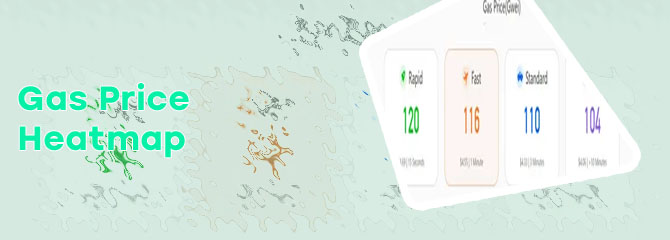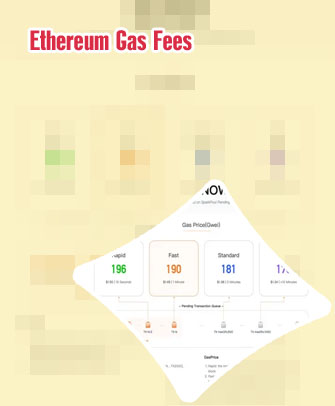
As Ethereum continues to gain popularity, the issue of high gas fees has become a major concern for users. In order to help address this problem, we have compiled a list of 4 articles that provide valuable insights and solutions for reducing gas fees on the Ethereum network. From tips on optimizing gas usage to exploring alternative layer 2 solutions, these articles offer a comprehensive guide to navigating the world of gas fees on Ethereum.
As Ethereum continues to gain popularity, the issue of high gas fees has become a major concern for users. In order to help address this problem, we have compiled a list of 4 articles that provide valuable insights and solutions for reducing gas fees on the Ethereum network. From tips on optimizing gas usage to exploring alternative layer 2 solutions, these articles offer a comprehensive guide to navigating the world of gas fees on Ethereum.
5 Ways to Reduce Gas Fees on Ethereum

Gas fees on the Ethereum network have become a major concern for users, especially with the recent surge in popularity of decentralized finance (DeFi) applications. Fortunately, there are several strategies that users can employ to reduce their gas fees and optimize their transactions on the network.
-
Opt for Off-Peak Hours: One way to reduce gas fees is to perform transactions during off-peak hours when network congestion is lower. This can help you avoid competing with other users for block space, resulting in lower fees.
-
Use Layer 2 Solutions: Layer 2 scaling solutions such as Loopring and zkSync can help reduce gas fees by moving transactions off the main Ethereum chain. By leveraging these solutions, users can enjoy faster and cheaper transactions without compromising security.
-
Batch Transactions: Another effective strategy is to batch multiple transactions into a single transaction. By bundling several transactions together, users can save on gas fees by paying only one fee for multiple actions.
-
Monitor Gas Prices: Keeping an eye on gas prices and adjusting your transaction accordingly can help you save on fees. By waiting for lower gas prices, you can ensure that you are not overpaying for your transactions.
-
Optimize Gas Usage: Lastly, optimizing your smart contracts and
Understanding Gas Fees: A Beginner's Guide
Gas fees are a critical aspect of using the Ethereum network, and for beginners, understanding how they work can be a daunting task. This guide provides a comprehensive overview of gas fees, breaking down the concept into easy-to-understand terms for newcomers to the world of cryptocurrency.
The article starts by explaining what gas fees are, highlighting their importance in processing transactions on the Ethereum blockchain. It then goes on to discuss how gas fees are calculated, covering factors such as network congestion and gas price. The guide also offers practical tips for users on how to optimize their gas fees, including using gas fee tracking tools and adjusting gas limits.
One practical use case of this knowledge is when a user, let's call her Sarah, wanted to send some Ethereum to a friend. By understanding how gas fees work, Sarah was able to adjust her gas price and limit to ensure that her transaction was processed quickly without overpaying for fees. As a result, Sarah's friend received the Ethereum promptly, and Sarah was pleased with the smooth and cost-effective transaction.
Overall, "Understanding Gas Fees: A Beginner's Guide" is an informative resource that equips readers with the knowledge they need to navigate the world of gas fees on the Ethereum network. Whether you're a newcomer to cryptocurrency or looking to optimize your
Exploring Layer 2 Solutions for Lower Gas Fees
In the world of blockchain technology, one of the biggest challenges that users face is the high gas fees associated with transactions. With the growing popularity of decentralized applications (dApps) and the increasing number of transactions on the Ethereum network, gas fees have become a major concern for users looking to interact with the platform.
To address this issue, developers have been exploring Layer 2 solutions that can help reduce gas fees and improve scalability. These solutions work by moving some of the transaction processing off the main Ethereum chain, allowing for faster and cheaper transactions.
One such solution that has gained traction is the implementation of sidechains or child chains. These sidechains operate independently of the main chain but are still connected to it, allowing for faster and more cost-effective transactions. By utilizing these Layer 2 solutions, users can enjoy the benefits of the Ethereum network without having to deal with the high gas fees that come with it.
Overall, exploring Layer 2 solutions for lower gas fees is crucial for the future of blockchain technology. As more users and developers flock to decentralized platforms, finding ways to reduce transaction costs and improve scalability will be key to ensuring the long-term success of these networks. By implementing these solutions, we can create a more efficient and user-friendly blockchain ecosystem for all.
Tips for Efficiently Managing Gas Fees on Ethereum
With the increasing popularity of decentralized applications (dApps) and non-fungible tokens (NFTs) on the Ethereum network, gas fees have become a significant concern for users. Gas fees are the transaction fees required to successfully execute operations on the Ethereum blockchain. In times of high network congestion, gas fees can skyrocket, making it costly for users to interact with the network.
One key tip for efficiently managing gas fees on Ethereum is to monitor network congestion. By keeping an eye on the current gas prices and network activity, users can choose the most opportune times to make transactions. Additionally, users can set gas limits and gas prices manually when sending transactions to ensure they are not overpaying for fees.
Another important tip is to utilize layer 2 solutions such as Polygon or Optimism. These scaling solutions allow users to perform transactions off-chain, significantly reducing gas fees and transaction times. By utilizing layer 2 solutions, users can enjoy a more cost-effective and efficient experience on the Ethereum network.
In conclusion, efficiently managing gas fees on Ethereum is crucial for users looking to minimize transaction costs and optimize their experience on the network. By following these tips and staying informed about network congestion, users can navigate the complexities of gas fees with ease.
